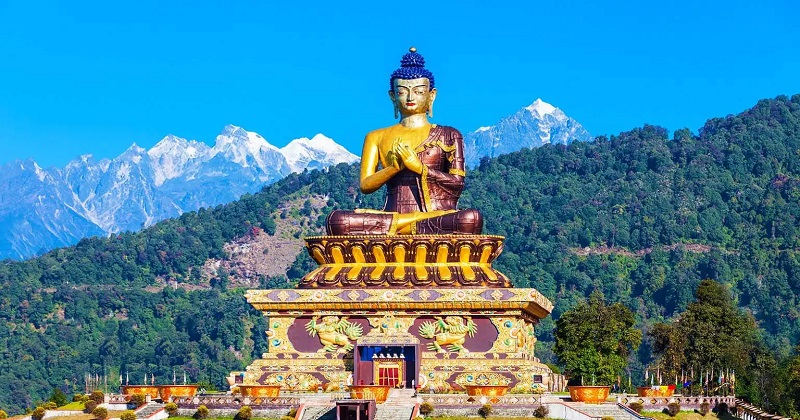
Sikkim, India’s least populated state, became a member of India on May 16, 1975. This day is known as Sikkim Day in honor of this cause. Sikkim had been a British protectorate of India since the nineteenth century. After India’s independence, the arrangement was maintained by a treaty in 1950, in which India accepted responsibility for communications, defense, and foreign affairs, as well as Sikkim’s ‘territorial integrity’.
Sikkim had internal autonomy. The India-friendly Sikkim National Congress won the general election in April 1974. The new administration intended to expand civil and political rights but was crushed by the Chogyal, Palden Thondup Namgyal.
Timeline
- It approved the Administration of Sikkim Act in May, which provided for responsible government and strengthened connections with India, and on 4 July 1974, the Parliament ratified a new constitution that called for the nation to become a state of India, which the Chogyal signed under duress from India.
- On 4 September 1974, the Indian Lok Sabha voted to make Sikkim an ‘associate’ state, with the Rajya Sabha voting for an amendment on 8 September, granting it the same status as other Indian states and incorporating it into the Indian Union.
- The Chogyal called for a free and fair referendum on September 8, 1974.
- On March 5, 1975, the National Congress renewed its efforts for Indian unity, while the Chogyal demanded another referendum.
- On April 9, Indian forces entered the kingdom, disarmed the royal guard (killing one and wounded four others), and surrounded the palace, arresting the monarch.
- On April 10, 1975, the Sikkim State Council overwhelmingly resolved to remove the monarchy and join with India in order to achieve complete Indian statehood, with the assistance of Indian Prime Minister Indira Gandhi. A vote on the subject has been scheduled on April 14th.
Referendum
Sunanda K. Datta-Ray questioned the plebiscite results, claiming that ‘it took at least two days by jeep, the fastest mode of transport, to reach some of these inaccessible habitations, and it simply would not have been physically possible to complete arrangements, hold the polls, and count votes between 11 and 15 April’. Chogyal supporters claim that 70 to 80 percent of voters were non-Indians.
After the results were announced, Sikkim’s chief minister, Kazi Lhendup Dorji, cabled the results to Indira Gandhi, asking her to ‘make an immediate response and accept the decision,’ to which she responded by saying that the Indian government would introduce a constitutional amendment in Parliament that would allow the kingdom to become a constitutional part of India.
On April 26, 1975, the Indian Parliament gained final assent to the constitutional change creating Sikkim as a state. On May 15, 1975, Indian President Fakhruddin Ali Ahmed passed a constitutional change making Sikkim India’s 22nd state and abolishing the status of Chogyal.
Foreign Reactions
China and Pakistan labeled the referendum a sham and a ruse for the forceful annexation of the principality, to which Indira Gandhi responded by reminding them of their occupation of Tibet and the problem of Azad Kashmir, which she considered Indian territory. The referendum, according to Chogyal, was ‘illegal and unconstitutional’. Given Sikkim’s placement on major commercial routes, the US administration saw the state’s incorporation into India as a historical and practical necessity. The Soviet Union replied enthusiastically, if subduedly.
Strategic Importance
During the 1962 Indo-China conflict and following confrontations at Nathu La and Chola in 1967, the strategic importance of Sikkim was recognized. Both India and China view Sikkim as a key area. Sikkim borders Nepal and Bhutan, nations where India and China vie for influence. Sikkim is also quite near to the Siliguri corridor (commonly known as the ‘Chicken’s neck’), which, if cut in the event of a war, would destroy the link between the Indian mainland and the Northeastern states.
Chumbi Valley is situated at the crossroads of India, China, and Bhutan. The location is adjacent to India’s Siliguri Corridor (chicken neck corridor). The Siliguri Corridor connects the rest of India to the Northeast, and Nepal to Bhutan. Chumbi Valley is also strategically important to China because of its shared border with Tibet and Sikkim.
Any development in the Chumbi Valley that changes the status quo in favor of Beijing would have major consequences for India. It should be mentioned that China wishes to expand the Chumbi valley by claiming regions in Bhutan’s west and north. The Bhutan-China border conflict dates back to 1950, and bilateral efforts to address the problem began in 1984. In the case of conflict, China may try to shut off the Siliguri corridor.
Some experts also argue that Chumbi Valley has limited deployment space. They go on to say that there is no other region in India’s northern frontiers with such stringent restrictions on military exercises as the Chumbi valley. This is why the 2017 Doklam standoff occurred between Indian and Chinese forces.

Post Your Comments